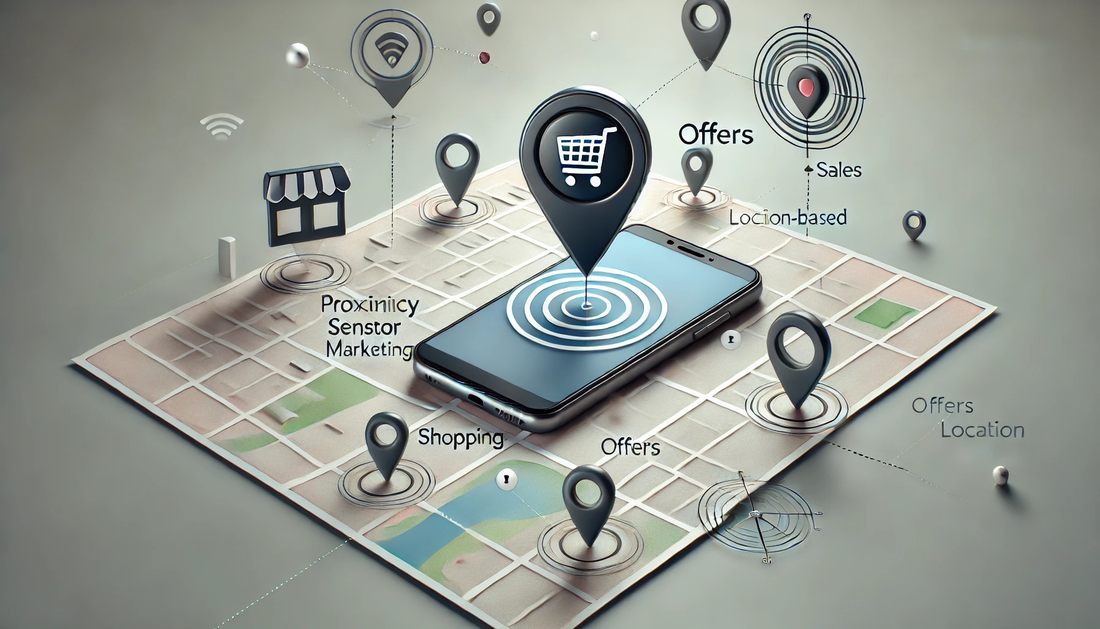📍✨ Introduction to Proximity Sensor Marketing
Proximity sensor marketing involves using location-based technology to send targeted messages and offers to consumers based on their geographic location. This strategy helps businesses connect with potential customers in real-time. ⏱️📲
For startups with limited resources, proximity sensor marketing is a powerful tool. 💪 It allows you to engage customers directly when they are most likely to make a purchase 🛒, maximizing the effectiveness of your marketing efforts. 📈
🚀💡 Top 10 Real-Life Examples of Proximity Sensor Marketing Success 💡🚀
- 🌟 Starbucks uses geofencing to attract customers with store-specific promotions 🌟
- 🏬 Target employs Bluetooth beacons for personalized in-store offers 🏬
- 🍟 McDonald's sends location-based offers to customers near their restaurants 🍟
- 💊 Walgreens uses proximity alerts to remind users of deals when nearby 💊
- 🛍️ Nordstrom provides in-store navigation via Bluetooth beacons 🛍️
- 💄 Sephora uses geofencing to notify nearby users of exclusive events 💄
- 🥤 Coca-Cola engages fans at events with location-triggered content 🥤
- 🥪 Subway promotes limited-time offers to customers near their locations 🥪
- ☕ Tim Hortons offers special discounts to customers close to their stores ☕
- 🏢 Macy's uses proximity tech to enhance the in-store shopping experience 🏢
🔍📲 How Proximity Sensor Marketing Works 📲🔍
Startups can leverage proximity sensor marketing by utilizing technologies like Bluetooth beacons 📡 and geofencing 📍. These tools detect when potential customers are nearby and can send notifications about promotions or offers directly to their mobile devices. 📩
By delivering timely and relevant messages, startups can enhance customer engagement 🤩 and drive foot traffic to their physical locations 🚶♂️🚶♀️.
🎯 Benefits for Startups 🎯
- 💰 Lower Marketing Costs: Focused messaging reduces wasted marketing spend by targeting only relevant consumers. 📉
- 🌍 Access to Larger Audiences: Location-based targeting allows you to reach more potential customers in your area. 📍📊
- 🤝 Credibility: Delivering personalized offers enhances your brand's reputation and fosters customer loyalty. ❤️
⚠️ Challenges and How to Overcome Them ⚠️
While proximity sensor marketing is effective, it does come with challenges: 💡
- 🧭 Brand Alignment: Ensure that your proximity messages align with your overall brand identity to keep consistency. 🎨
- 💥 Competition for Attention: Differentiate your offers by providing unique and valuable incentives to attract customers. 🤑
Choosing the right technology partners 🤝 and platforms 🌐 is crucial for successful implementation.
📈 Step-by-Step Guide to Implementing Proximity Sensor Marketing 📈
- 🔍 Define Your Goals: Identify what you want to achieve with proximity marketing. 🎯
- ⚙️ Choose the Right Technology: Select the appropriate tools, like beacons 🛰️ or geofencing software 🗺️.
- 👥 Segment Your Audience: Determine which customer segments you want to target with location-based offers. 📊
- 💡 Create Compelling Offers: Develop attractive promotions that encourage immediate action from potential customers. 🛍️
- 📊 Monitor and Optimize: Track the performance of your campaigns and adjust strategies based on data insights. 📈📉
💥 Tips for Maximizing Results 💥
- 📲 Integrate with Other Channels: Combine proximity marketing with email and social media campaigns for a holistic approach. 📧📱
- 🔔 Engage Customers: Encourage customers to opt-in for notifications to enhance your marketing reach. 🔔💬
- 🎁 Provide Value: Ensure that your offers are genuinely beneficial to encourage customer participation. 🎉💸
🌟 Conclusion 🌟
Proximity sensor marketing is a powerful strategy for startups to drive sales 💵 and enhance customer engagement through location-based offers. 🗺️
By implementing this approach, you can significantly boost your marketing efforts 📈 and foster growth. 🌱 Start leveraging proximity sensor marketing today and watch your business thrive! 🚀🎉










